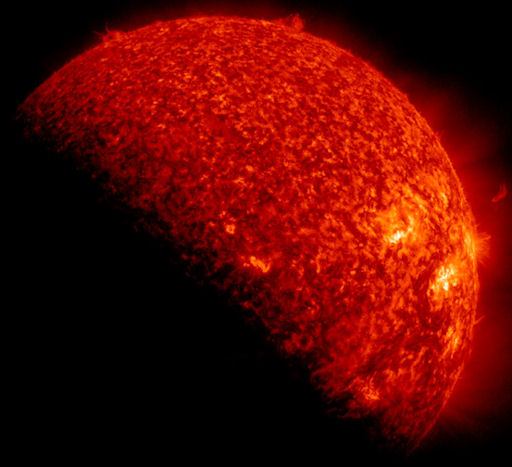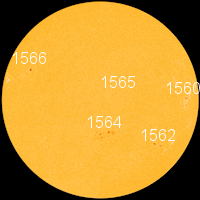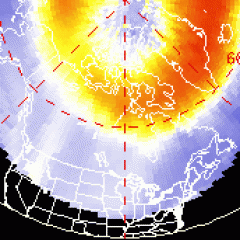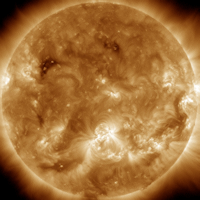~Space Weather Update~ Contunued MAGNETIC UNREST: [1]
SDO ECLIPSE SEASON: Twice every year, around the time of the equinoxes, Earth can pass directly between the Sun and NASA's Solar Dynamics Observatory (SDO), producing a series of beautiful eclipses from the point of view of the spacecraft. SDO's autumnal eclipse season began yesterday, Sept. 6th, with a partial blackout of the sun:
During the eclipse, which was centered around 0700 UT, Earth covered about half of the sun. Because these eclipses typically last only a few minutes, there is still plenty of time remaining in the day for SDO to monitor activity on the sun. The observatory won't miss much even with Earth occasionally getting in the way. The ongoing eclipse season will end on Sept. 26th. Between now and then, stay tuned for some rare blackouts [3].
MAGNETIC UNREST: Earth's magnetic field is still reverberating [4] from a pair of CME impacts--a relatively strong blow on Sept 3rd followed by a lesser hit on Sept. 4th. The double strike ignited auroras around the Arctic Circle that are only slowly fading. Olivier Du Tré photographed this apparition over Red Deer, Alberta, on Sept. 5th:

![]()
Solar wind
speed: 386.0 km/sec
density: 0.2 protons/cm3
explanation [5] | more data [6]
Updated: Today at 1526 UT
![]()
X-ray Solar Flares
6-hr max: C1 1033 UT Sep07
24-hr: C3 0045 UT Sep07
explanation [7] | more data [8]
Updated: Today at: 1500 UT
![]()
![]()
![]()
Daily Sun: 06 Sep 12
![]()
![]()
Sunspot 1564 is crackling with borderline M-class [10] solar flares. Credit: SDO/HMI
![]()
![]()
![]()
Sunspot number: 112
What is the sunspot number? [11]
Updated 06 Sep 2012
Spotless Days
Current Stretch: 0 days
2012 total: 0 days (0%)
2011 total: 2 days (<1%)
2010 total: 51 days (14%)
2009 total: 260 days (71%)
Since 2004: 821 days
Typical Solar Min: 486 days
Update 06 Sep 2012
The Radio Sun
10.7 cm flux: 133 sfu
explanation [12] | more data [13]
Updated 06 Sep 2012
![]()
![]()
![]()
Current Auroral Oval:
![]()
Switch to: Europe, USA, New Zealand, Antarctica
Credit: NOAA/POES
![]()
![]()
![]()
Planetary K-index
Now: Kp= 2 quiet
24-hr max: Kp= 3 quiet
explanation [15] | more data [16]
![]()
Interplanetary Mag. Field
Btotal: 6.1 nT
Bz: 4.6 nT south
explanation [17] | more data [18]
Updated: Today at 1527 UT
![]()
![]()
![]()
Coronal Holes: 06 Sep 12
![]()
![]()
There are no large coronal holes on the Earthside of the sun. Credit: SDO/AIA.



